-
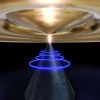 +2 +1
+2 +1Casimir force used to control and manipulate objects
A collaboration between researchers from the University of Western Australia and the University of California Merced has provided a new way to measure tiny forces and use them to control objects.
-
 +4 +1
+4 +16-Year-Old Child Prodigy Joshua Beckford Is Youngest Ever Oxford University Student
Gaining admission to Oxford, the prestigious British university thought to be better than pretty much every American Ivy League school besides Harvard, is a major achievement at any age. However, the fact that Joshua Beckford attended the school at only 6 years old is absolutely mind-blowing.
-
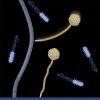 +4 +1
+4 +1Peering into the secrets of phages to see how they kill bacterial superbugs
A research collaboration involving Monash University has made an exciting discovery that may eventually lead to targeted treatments to combat drug-resistant bacterial infections, one of the greatest threats to global health.
-
 +16 +2
+16 +2One Mystery of Stonehenge’s Origins Has Finally Been Solved
For more than four centuries, archaeologists and geologists have sought to determine the geographical origins of the stones used to build Stonehenge thousands of years ago. Pinning down the source of the large blocks known as sarsens that form the bulk of the monument has proved especially elusive. Now researchers have resolved the mystery: 50 of the 52 extant sarsens at Stonehenge came from the West Woods site in the English county of Wiltshire, located 25 kilometers to the north of Stonehenge. The findings were published on Wednesday in Science Advances.
-
 +20 +4
+20 +4Dogs may use Earth's magnetic field to navigate
A team of researchers from Czech University of Life Sciences, Virginia Tech and Barry University has found evidence that suggests dogs may use Earth's magnetic field as a navigational aid. In their paper in the eLife Sciences initiative, the group describes their study of dog navigation and what they learned from it.
-
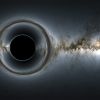 +3 +1
+3 +1Hungriest of black holes among the most massive in the universe, Australian National University research
We now know just how massive the fastest-growing black hole in the universe actually is, as well as how much it eats, thanks to new research led by the Australian National University (ANU). It is 34 billion times the mass of our Sun and gorges on nearly the equivalent of one Sun every day, according to Dr. Christopher Onken and his colleagues.
-
 +4 +1
+4 +1Scientists apply 'twistronics' to light propagation and make a breakthrough discovery
A research team led by scientists at the Advanced Science Research Center at The Graduate Center, CUNY (CUNY ASRC), in collaboration with National University of Singapore, University of Texas at Austin and Monash University, has employed "twistronics" concepts (the science of layering and twisting two-dimensional materials to control their electrical properties) to manipulate the flow of light in extreme ways. The findings, published in the journal Nature, hold the promise for leapfrog advances in a variety of light-driven technologies, including nano-imaging devices; high-speed, low-energy optical computers; and biosensors.
-
 +14 +3
+14 +3The man in the iron lung
The long read: When he was six, Paul Alexander contracted polio and was paralysed for life. Today he is 74, and one of the last people in the world still using an iron lung. But after surviving one deadly outbreak, he did not expect to find himself threatened by another
-
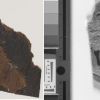 +13 +2
+13 +2Dead Sea Scroll fragments thought to be blank reveal text
New research has revealed that four Dead Sea Scroll manuscript fragments housed at The University of Manchester’s John Rylands Library, which were previously thought to be blank, do in fact contain text.
-
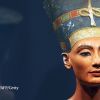 +11 +1
+11 +1Is this Nefertiti’s tomb? Radar clues reignite debate over hidden chambers
A radar survey around the tomb of Tutankhamun in Egypt’s Valley of the Kings has revealed possible evidence of further hidden chambers behind its walls. The findings — in an unpublished report, details of which have been seen by Nature — resurrect a controversial theory that the young king’s burial place hides the existence of a larger tomb, which could contain the mysterious Egyptian queen Nefertiti.
-
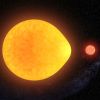 +12 +2
+12 +2New type of pulsating star discovered
A star that pulsates on just one side has been discovered in the Milky Way about 1500 light years from Earth. It is the first of its kind to be found and scientists expect to find many more similar systems as technology to listen inside the beating hearts of stars improves.
-
 +3 +1
+3 +1In Brain Waves, Scientists See Neurons Juggle Possible Futures
Decisions, decisions. All of us are constantly faced with conscious and unconscious choices. Not just about what to wear, what to eat or how to spend a weekend, but about which hand to use when picking up a pencil, or whether to shift our weight in a chair.
-
 +15 +4
+15 +4These DARPA-funded bricks can self-repair—and replicate
Concrete may be one of mankind’s worst inventions. While it’s helped us build tall, sturdy buildings, it is causing more damage to our planet than any other material on Earth, largely due to its water use and the carbon footprint of its production. Specifically, grinding stone into clinker, the lumpy gray stuff you see in concrete, accounts for 50% of concrete’s carbon impact. There must be a better way.
-
 +15 +1
+15 +1Kirigami designs hold thousands of times their own weight
A team of researchers found that using the origami-inspired art of paper cutting and folding, it is possible to create super strong models from lightweight soft materials without the need for adhesives or fasteners.
-
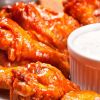 +5 +1
+5 +1How to Stop Your Butt from Burning after Eating Spicy Foods
Enjoy your sriracha now, and don’t worry about pooping in pain later
-
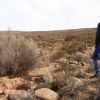 +4 +1
+4 +1Restoring Dignity to Stolen Ancestors
In the first effort of its kind, a team at a South African university not only returns human remains to families but also provides a window into the world of ancestral San and Khoe people.
-
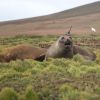 +16 +5
+16 +5This NASA photo of a seal wearing an antenna has a very "deep" explanation
ASA recruits a diverse array of scientists to study our planet and our universe. But one female research assistant, based in Pasadena, California, has a rather unusual resume and bio.
-
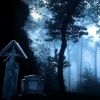 +10 +2
+10 +2The Metaphysics of Horror
David Livingstone Smith, author of On Inhumanity: Dehumanization and How to Resist It, explains why it's the metaphysical threat posed by Halloween creatures that gives them their horrifying power.
-
 +15 +1
+15 +1A filament fit for space—silk is proven to thrive in outer space temperatures
Their initial discovery had seemed like a contradiction because most other polymer fibres embrittle in the cold. But after many years of working on the problem, the group of researchers have discovered that silk's cryogenic toughness is based on its nano-scale fibrills. Sub-microscopic order and hierarchy allows a silk to withstand temperatures of down to -200 C. And possibly even lower, which would make these classic natural luxury fibres ideal for applications in the depths of chilly outer-space.
-
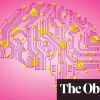 +33 +8
+33 +8Are brain implants the future of thinking?
Brain-computer interface technology is moving fast and Silicon Valley is moving in. Will we all soon be typing with our minds?
Submit a link
Start a discussion




















